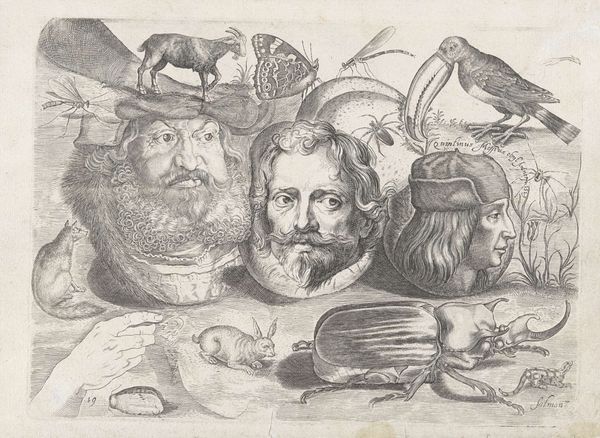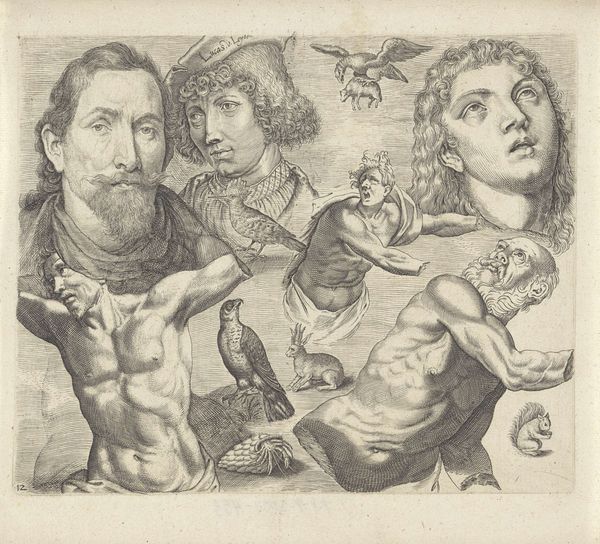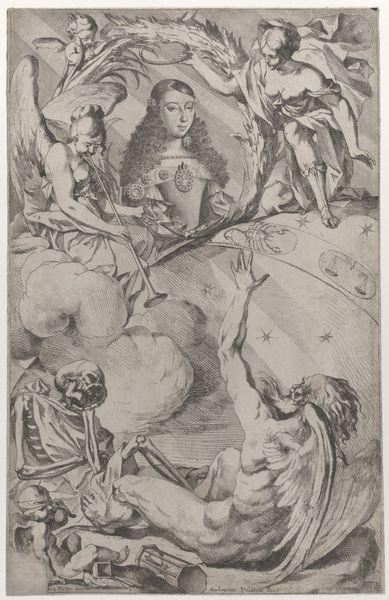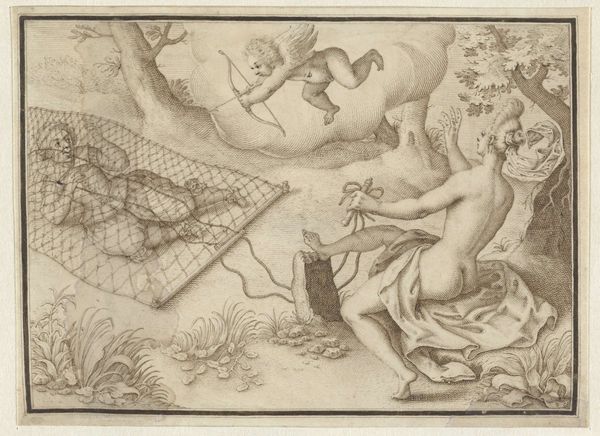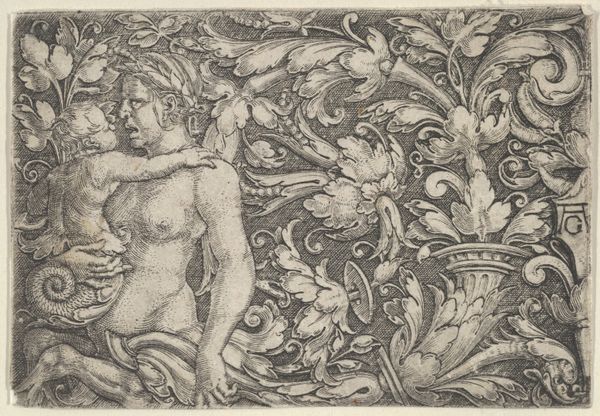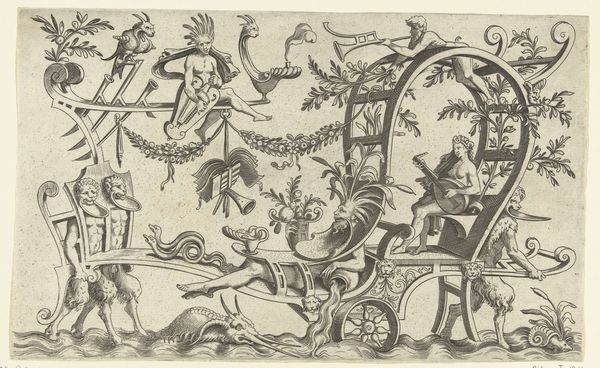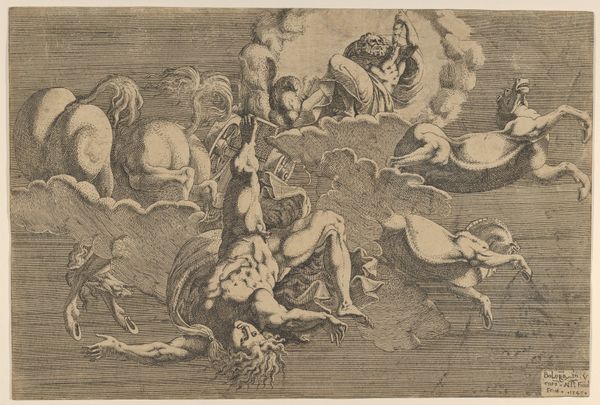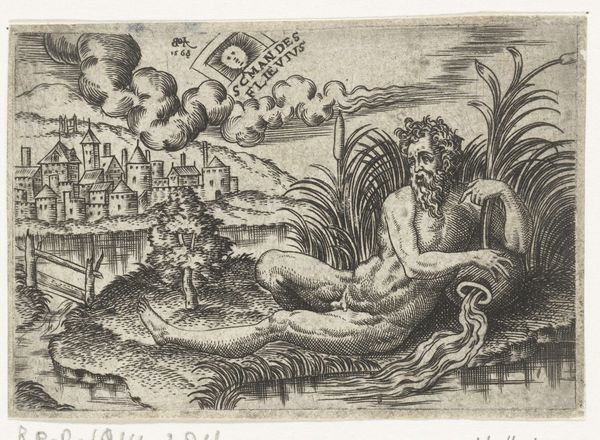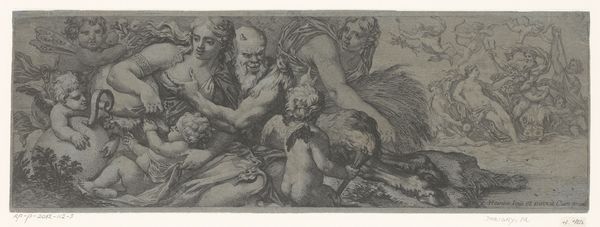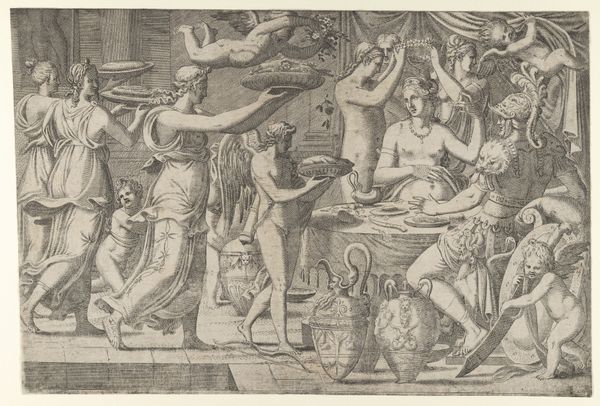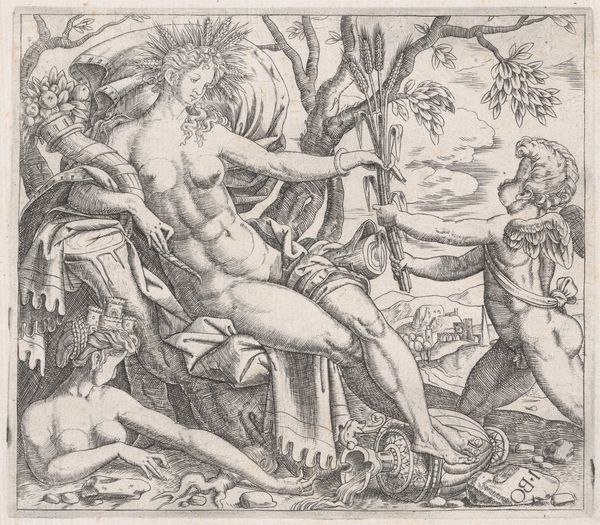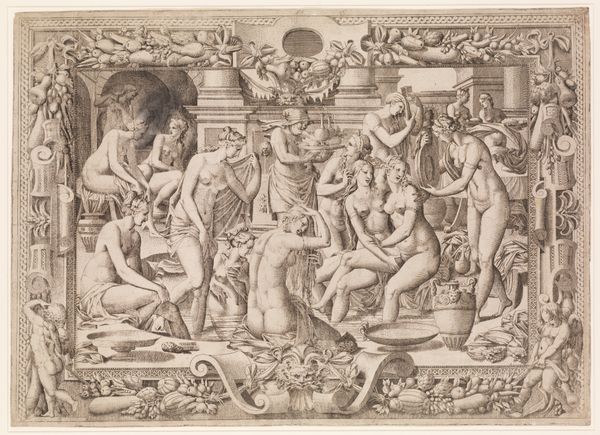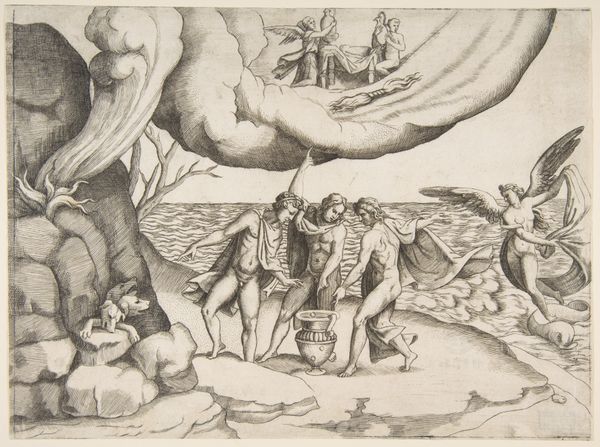
drawing, print, paper, ink, engraving
#
drawing
#
baroque
# print
#
figuration
#
paper
#
ink
#
portrait drawing
#
engraving
Dimensions: height 175 mm, width 253 mm
Copyright: Rijks Museum: Open Domain
Curator: Here we have "Study Sheet with Drawing Examples: Heads, Animals, Figures" by Michael Snijders, dating from 1610 to 1672. It's an engraving printed with ink on paper. Editor: It's… intense. A real grab bag of images, all crammed together. Almost unsettling. Is it meant to be humorous, or is there a darker edge I'm missing? Curator: Its historical context is essential. This sheet was created in a period where the artist's hand was being examined against a rise in workshops producing art. So it shows his skill with a range of subjects, proving his artistry. Editor: I see what you mean, it is kind of a portfolio then. I'm immediately drawn to the variety of forms achieved just through engraving. Look at the textures – the soft fur of the animals contrasted with the smooth skin of the human figures. What kind of labor goes into that fine line work? Curator: Exactly! Each image served as a model. Notice the idealized Renaissance faces juxtaposed with ordinary folk and allegorical figures, reflecting broader cultural fascinations and anxieties of that era. Think about it: anxieties about class, about access. Who is considered worthy of depiction, and what skills are commodified in Snijders’ practice? Editor: It challenges traditional distinctions. This isn't "high art" in the conventional sense, yet the skills employed were foundational to artistic training at the time. You see, there’s the engraver at the bottom resting near his donkey, seemingly contemplating the labor that awaits. Even his inclusion challenges these boundaries. Curator: He understood that representation involves more than mimicry; it entails selection, framing, and asserting a particular viewpoint of subjects—reflecting gender, class, and power structures. This piece urges viewers to understand art beyond skill by considering how these societal norms shape aesthetic values. Editor: It becomes evident once we engage with its layers of making. Thinking about the materiality and labor adds new meanings to these images. And yes, I now recognize the social commentary and material process are key. Curator: Ultimately, these individual elements demonstrate Snijders’ multifaceted talents while revealing underlying cultural ideologies during artistic production. Editor: Seeing how he highlights his craftsmanship invites us to reflect on the value assigned to skill versus artistry, especially in a time so concerned with status.
Comments
No comments
Be the first to comment and join the conversation on the ultimate creative platform.

